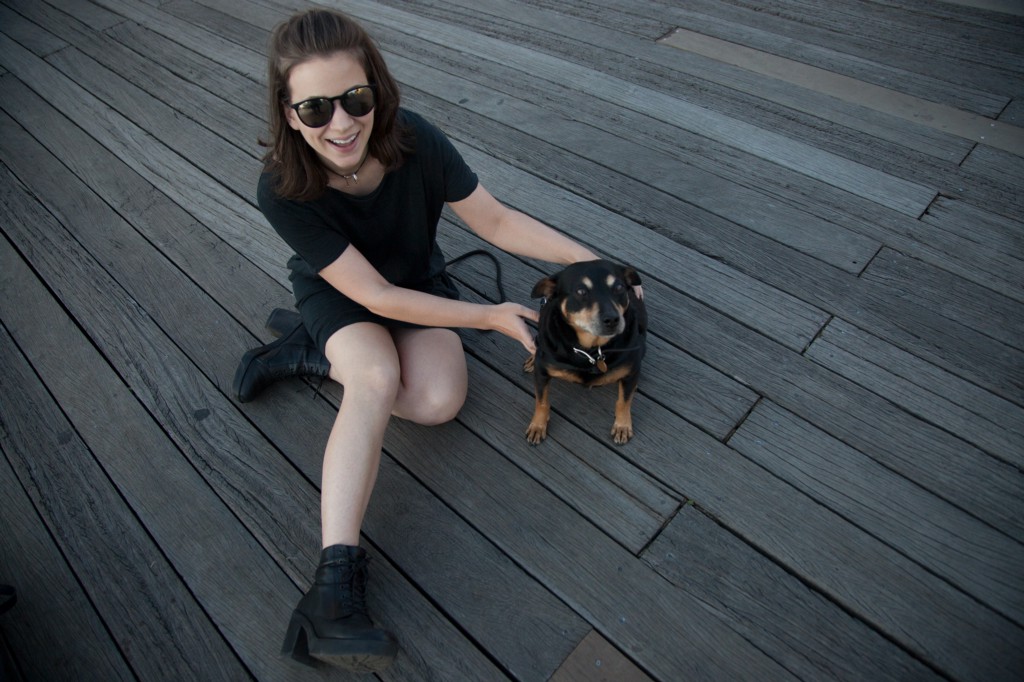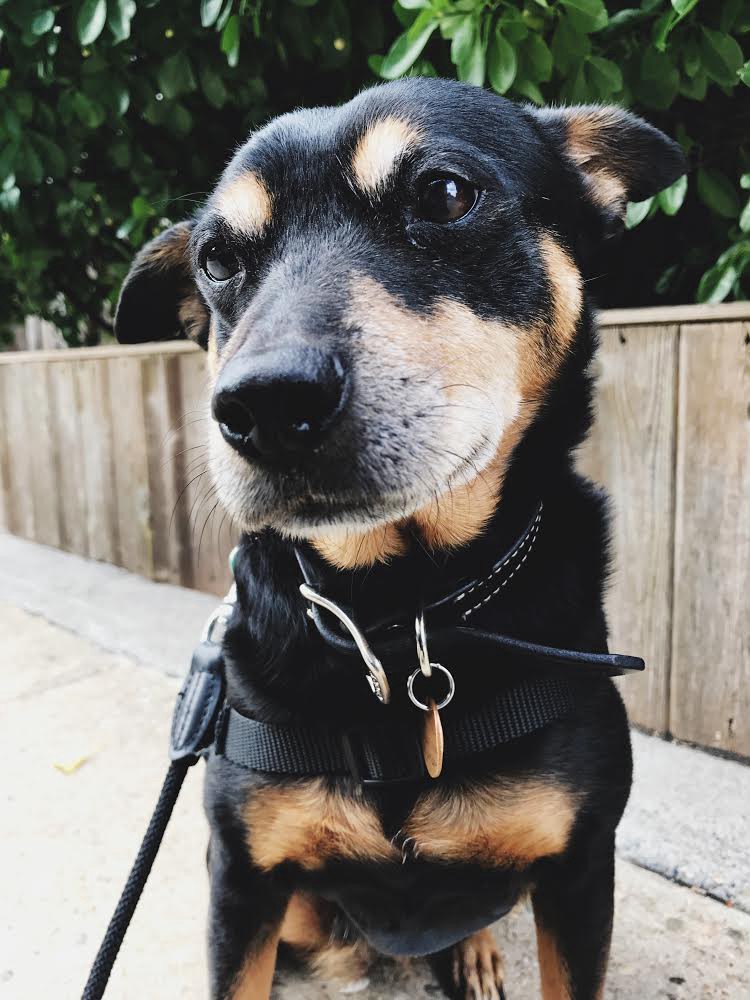Why You Should Adopt A Senior Dog This November
You won’t regret it.

On the pet adoption event’s website listing all the available dogs, a picture of a fluffy, sandy-colored two-year-old dog stood out. It was decided — Buttercup was going to be our dog. But by the time we made it up to the shelter’s event, another couple was already signing the paperwork for Buttercup. She was running around their feet, chewing on her leash. She looked even fluffier than I had imagined.
The shelter had brought half a dozen other dogs to the adoption event, so there were plenty more pups to choose from, but it all felt very overwhelming. One of the volunteers, a vivacious woman wearing velour sweatpants covered in dog hair, listened patiently as we prattled on about how we were first-time dog owners, worked long hours and lived in a small apartment, and didn’t really have a clue about dogs but knew we really wanted to give one a good home. We looked round anxiously at the scrum of dogs.
“This is the dog for you,” she chipped and stood to one side. We hadn’t even noticed the black-haired mutt wearing a tattered sweater vest and a green bandana with “Adopt me!” emblazoned across it. “She’s seven. Trust me, she’s perfect for you.”

Older dogs are always last to get picked. The American Society for the Prevention of Cruelty to Animals (ASPCA), found that the adoption rate for senior dogs — dogs aged seven and older — across the shelters they work with is 25%, compared to 60% for younger dogs. Worse still, the data shows that older dogs are at higher risk of being euthanized—the study found that the live release rate (the total number of dogs either adopted, returned to their owners, or sent to another facility that can guarantee rehousing) for older dogs is 57%, compared to 75% for younger dogs.
“Fewer senior dogs are getting out of the shelter alive,” Dr. Emily Weiss, Vice President of Shelter Research and Development for the ASPCA, told me. Weiss said that she can’t say for certain why senior dogs are less likely to be adopted than their younger counterparts, but that she has a few theories.
Older dogs are more likely to come to a shelter having been in a family home for a long time. So when they get to the facility, they can be withdrawn, she explained. This, coupled with the natural tendency of an older dog to be more docile than a puppy, means they won’t be perceived to be as enthusiastic by potential adopters. “Studies show that when folks are looking to choose an adult dog, once they’ve chosen based on looks, the next most important thing is how the dog behaves,” she said. In other words, people tend to pick the dogs that run up to them and lick them.
November is Adopt A Senior Pet Month, an initiative started by the ASPCA to raise awareness of the need for more people to adopt older animals. This particular November marks a year since Dolly, an eight-year-old terrier mix, came into my life. I can say wholeheartedly that there are so many benefits to adopting a senior pet that many people might not realize.

As a first-time dog owner — and someone who used to be scared of dogs — I had hang ups about whether adopting from a shelter was going to mean I would end up with an emotionally traumatized dog that was going to poop in my favorite pair of boots. And I wasn’t the only one who has negative associations of older dogs. According to Dr. Weiss, people think it’s more likely that an older animal will have behavioral problems. “We don’t have data to support that,” she said. “It’s a myth.”

Retired Professor of Psychology at the University of British Columbia and dog cognition expert, Stanley Coren, agreed that there’s no reason to assume just because a dog is older, there will be a problem. “Dogs can form bonds at virtually any time in their life,” he said. “They transfer their affections quite easily — that’s one of the nice things about rehoming dogs.”
The Manhattan shelter we got Dolly from, Bideawee, assesses all their dogs and categorizes their personality types. They use a color-coding system — green, yellow, and red — to classify the dogs. Dolly was green, meaning she’s an easy dog. Melissa Treuman, Bideawee’s Director of Communications told me: “No animal goes to a home, or is even seen by volunteers, until they’ve been behaviorally evaluated.”
Dolly is a polite, kind and deeply sincere creature. When she meets new people, she sits at their feet, furiously wagging her tail, entreating them to pet her head. She’ll curl up next to me on the sofa when I’m watching TV, and gently nudge my hand to ask for more rubs and cuddles. Bringing her into our home was a smooth process. She didn’t have a single accident in the house, she didn’t cry when we left her alone, and she didn’t destroy anything. No boots were pooped in.

Treuman also explained why older dogs adjust so easily: They “know a ton of commands already, you don’t have to teach them the basics, they’ve probably lived in a home before so they tend to integrate a lot easier. They know the drill.” She added that for people living busy lives, dogs with lower energy levels are a smart choice. “The vast majority of pet owners don’t have the luxury of staying home all day. It can be tough when you’re working long hours and you come home and the first thing you want to do is sit down and you have this animal that’s been climbing the walls all day.” You also don’t need to worry about getting them a new bed or crate as they get bigger, as they’re already full grown.
There’s also a small financial benefit to adopting an older dog — adoption fees are lower. In celebration of Adopt A Senior Pet Month, Bideawee is actually waiving the fee for all its animals aged seven and older throughout November. Many shelters run similar promotions.

The term “senior” dog is a bit of a misnomer, because when you consider that the median life expectancy of a dog is 12 years, a seven, eight or even nine year old dog isn’t so much senior as they are middle-aged. In fact, a survey by the pet food brand Purina Pro Plan found that only 18% of owners actually knew that dogs are considered senior at age seven.
“The old adage that you can’t teach old dogs new tricks is not true,” Professor Coren said. “You can train a dog at any time. However, it’s very hard to unteach things which they had already known. So what you can do in those situations is to train over what they’ve learned.” Professor Coren explained that people who take on older dogs should always rename them, in order to establish the fresh start. “You establish a new world for this dog,” Professor Coren told me. “In some respects, it’s like bring a puppy into the house because you’re starting from ground zero. Except it doesn’t have all the messy bits of having a puppy.”
The chance of an older dog having a health issue is of course higher than with a puppy. Dr. Weiss confirmed this: “The older an animal gets, the more likely they are to have some kind of medical issue, but that’s as they get much older.” Dolly had arthritis when we adopted her, but the vet couldn’t be sure why as she didn’t have any of Dolly’s medical records from her previous life. But scans revealed an old injury in her right elbow that hadn’t healed properly and became arthritic. So despite being an ailment associated with old age, it was actually more likely caused either by improper care, or just bad luck.
Dolly now takes a daily supplement. Very rarely, she will wake up in the night crying from the pain. The first time this happened, I held her in the darkness stroking her head, not knowing what was wrong. But a chat with the vet the next morning and a prescription for Tramadol later, I was armed with what to do to help alleviate her pain. Learning how to read the little signs Dolly gives that she’s aching a bit more than usual, and being able to do something to make her feel better has been a deep bonding experience between the two of us. In those moments, it doesn’t matter to me how old Dolly is, just that she’s doing okay. To me, she’s just this tiny creature that needs love and care.
